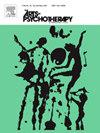Treatment effects of art therapy on adolescents with problematic Internet gaming behavior
IF 1.5
3区 心理学
Q3 PSYCHOLOGY, CLINICAL
引用次数: 0
Abstract
Problematic Internet gaming is prevalent among adolescents with depression, anxiety, and Attention-Deficit Hyperactivity Disorder (ADHD). Art therapy is an effective treatment for anxiety, depression, and attention problems. We hypothesized that art therapy would be effective in reducing the severity of Internet Gaming Disorder (IGD) in adolescents and lead to better improvement in depression and anxiety compared to Cognitive Behavior Therapy (CBT). We recruited 92 adolescents, aged 13–15, with problematic gaming behaviors (48 CBT, 44 art therapy). CBT (1 therapist, 4–5 adolescents) and art therapy (4 therapists, 8–10 adolescents) were conducted in 12 and 10 90-min sessions, respectively. Symptom severity was assessed pre- and post-intervention using scales for IGD, anxiety, attention problems, and depression. The Person Picking Apples from a Tree (PPAT) drawing test was used to assess self-image. IGD and ADHD symptoms decreased in both groups; however, these changes showed no significant between-group differences. Depression and anxiety significantly decreased in the art therapy group, compared to the CBT group. In the art therapy group, changes in “implied energy” on PPAT were negatively correlated with changes in depression and IGD scores. Both CBT and art therapy positively affected anxiety, depression, and ADHD symptoms. However, art therapy, which helps reduce stress hormones by stimulating brain regions through sensory and visual experiences, significantly reduced depression and anxiety compared to CBT. This study examined an art therapy method that could be considered abstract from a different perspective, utilizing PPAT, which allowed for a more scientific and systematic evaluation.
艺术疗法对青少年网络游戏问题行为的治疗效果
有问题的网络游戏在患有抑郁、焦虑和注意力缺陷多动障碍(ADHD)的青少年中很普遍。艺术疗法是治疗焦虑、抑郁和注意力问题的有效方法。我们假设,与认知行为疗法(CBT)相比,艺术疗法可以有效降低青少年网络游戏障碍(IGD)的严重程度,并能更好地改善抑郁和焦虑。我们招募了92名13-15岁的青少年,他们有问题的游戏行为(48名是CBT, 44名是艺术治疗)。CBT(1名治疗师,4 - 5名青少年)和艺术治疗(4名治疗师,8-10名青少年)分别在12次和10次90分钟的疗程中进行。使用IGD、焦虑、注意力问题和抑郁量表评估干预前后的症状严重程度。采用“从树上摘苹果的人”(PPAT)绘画测试对自我形象进行评估。两组IGD和ADHD症状均有所减轻;然而,这些变化在组间无显著差异。与CBT组相比,艺术治疗组的抑郁和焦虑明显减少。在艺术治疗组中,PPAT“隐含能量”的变化与抑郁和IGD评分的变化呈负相关。CBT和艺术疗法对焦虑、抑郁和ADHD症状都有积极影响。然而,与CBT相比,艺术疗法通过感官和视觉体验刺激大脑区域,帮助减少压力激素,显著减少抑郁和焦虑。本研究考察了一种艺术治疗方法,从不同的角度来看,这种方法可以被认为是抽象的,利用PPAT,可以进行更科学和系统的评估。
本文章由计算机程序翻译,如有差异,请以英文原文为准。
求助全文
约1分钟内获得全文
求助全文
来源期刊

Arts in Psychotherapy
Multiple-
CiteScore
3.20
自引率
11.10%
发文量
66
期刊介绍:
The Arts in Psychotherapy is a dynamic, contemporary journal publishing evidence-based research, expert opinion, theoretical positions, and case material on a wide range of topics intersecting the fields of mental health and creative arts therapies. It is an international peer-reviewed journal publishing 5 issues annually. Papers are welcomed from researchers and practitioners in the fields of art, dance/movement, drama, music, and poetry psychotherapy, as well as expressive and creative arts therapy, neuroscience, psychiatry, education, allied health, and psychology that aim to engage high level theoretical concepts with the rigor of professional practice. The journal welcomes contributions that present new and emergent knowledge about the role of the arts in healthcare, and engage a critical discourse relevant to an international readership that can inform the development of new services and the refinement of existing policies and practices. There is no restriction on research methods and review papers are welcome. From time to time the journal publishes special issues on topics warranting a distinctive focus relevant to the stated goals and scope of the publication.
 求助内容:
求助内容: 应助结果提醒方式:
应助结果提醒方式:


